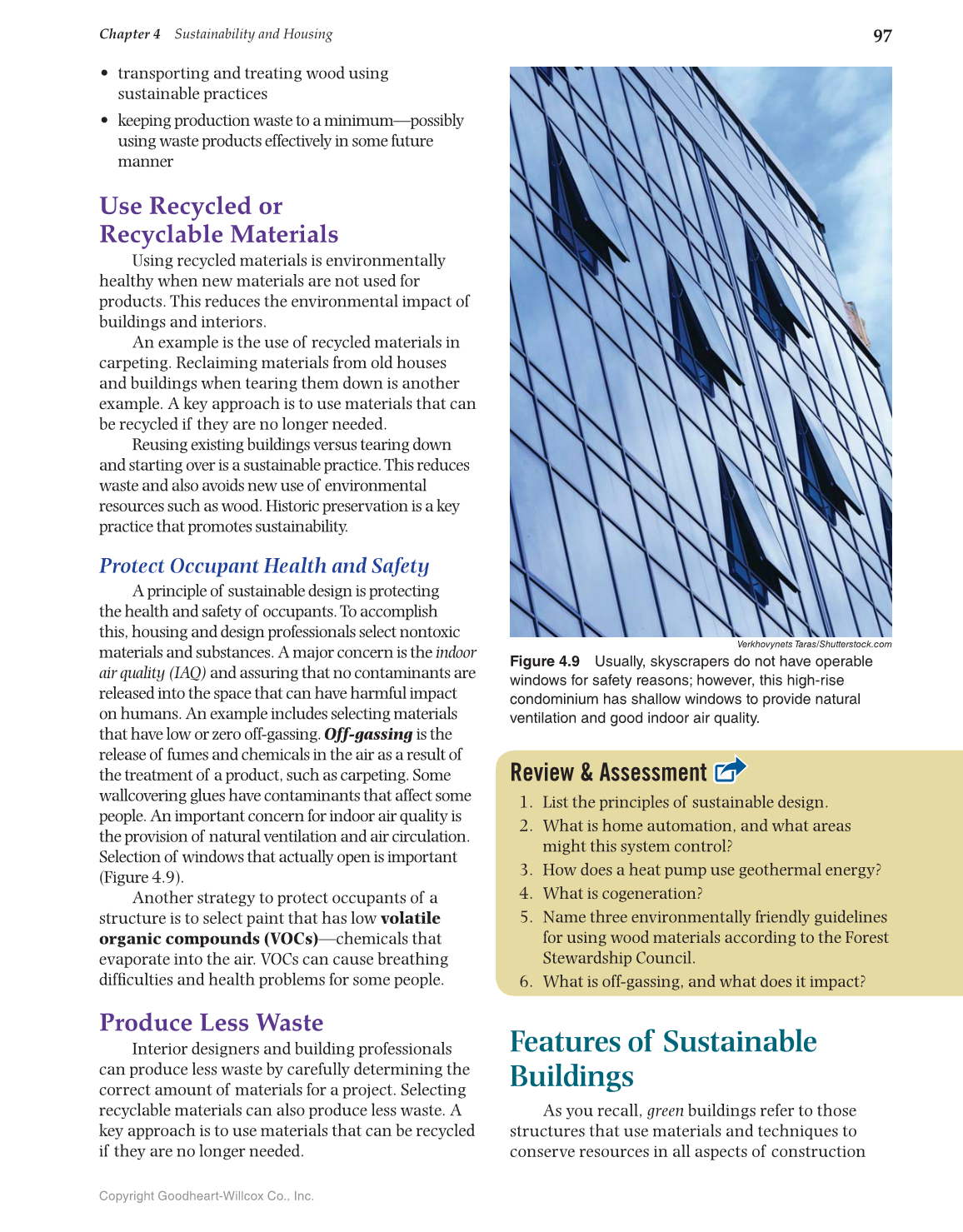97
Chapter 4 Sustainability and Housing
Copyright Goodheart-Willcox Co., Inc.
• transporting and treating wood using
sustainable practices
• keeping production waste to a minimum—possibly
using waste products effectively in some future
manner
Use Recycled or
Recyclable Materials
Using recycled materials is environmentally
healthy when new materials are not used for
products. This reduces the environmental impact of
buildings and interiors.
An example is the use of recycled materials in
carpeting. Reclaiming materials from old houses
and buildings when tearing them down is another
example. A key approach is to use materials that can
be recycled if they are no longer needed.
Reusing existing buildings versus tearing down
and starting over is a sustainable practice. This reduces
waste and also avoids new use of environmental
resources such as wood. Historic preservation is a key
practice that promotes sustainability.
Protect Occupant Health and Safety
A principle of sustainable design is protecting
the health and safety of occupants. To accomplish
this, housing and design professionals select nontoxic
materials and substances. A major concern is the indoor
air quality (IAQ) and assuring that no contaminants are
released into the space that can have harmful impact
on humans. An example includes selecting materials
that have low or zero off-gassing. Off-gassing is the
release of fumes and chemicals in the air as a result of
the treatment of a product, such as carpeting. Some
wallcovering glues have contaminants that affect some
people. An important concern for indoor air quality is
the provision of natural ventilation and air circulation.
Selection of windows that actually open is important
(Figure 4.9).
Another strategy to protect occupants of a
structure is to select paint that has low volatile
organic compounds (VOCs)—chemicals that
evaporate into the air. VOCs can cause breathing
diffi culties and health problems for some people.
Produce Less Waste
Interior designers and building professionals
can produce less waste by carefully determining the
correct amount of materials for a project. Selecting
recyclable materials can also produce less waste. A
key approach is to use materials that can be recycled
if they are no longer needed.
Review & Assessment
1. List the principles of sustainable design.
2. What is home automation, and what areas
might this system control?
3. How does a heat pump use geothermal energy?
4. What is cogeneration?
5. Name three environmentally friendly guidelines
for using wood materials according to the Forest
Stewardship Council.
6. What is off-gassing, and what does it impact?
Features of Sustainable
Buildings
As you recall, green buildings refer to those
structures that use materials and techniques to
conserve resources in all aspects of construction
Verkhovynets Taras/Shutterstock.com
Figure 4.9 Usually, skyscrapers do not have operable
windows for safety reasons; however, this high-rise
condominium has shallow windows to provide natural
ventilation and good indoor air quality.
